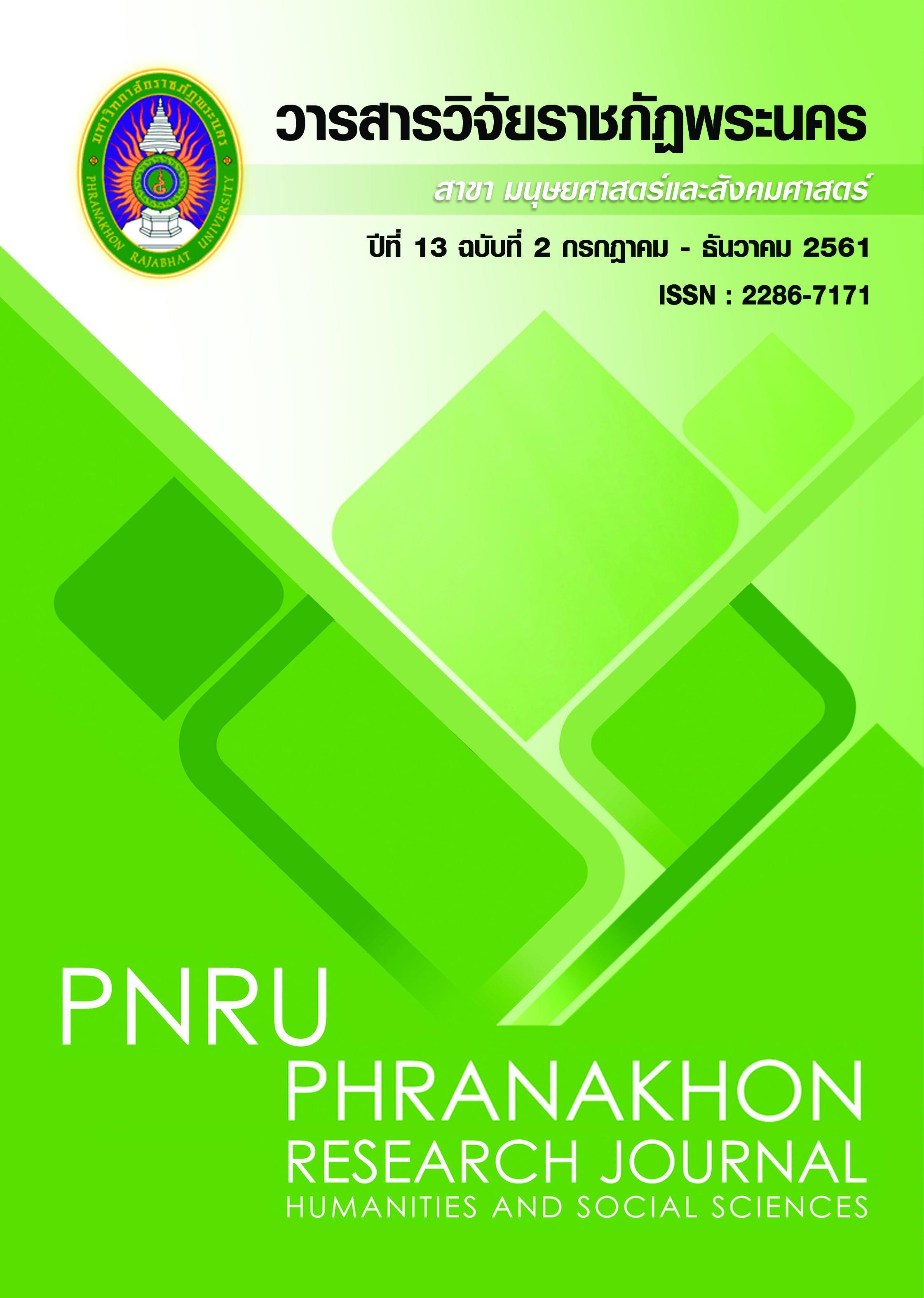ปัจจัยพยากรณ์ความตั้งใจในการใช้เครือข่ายสังคมออนไลน์ของพระสงฆ์เขตกรุงเทพมหานคร
Main Article Content
บทคัดย่อ
งานวิจัยเรื่องปัจจัยพยากรณ์ความตั้งใจในการใช้เครือข่ายสังคมออนไลน์ของพระสงฆ์ในเขตกรุงเทพมหานครฯ มีวัตถุประสงค์ในการวิจัยเพื่อ 1.เพื่อศึกษาความสัมพันธ์ระหว่างการรับรู้ความสามารถของตนในการใช้เทคโนโลยีการสื่อสาร การรับรู้ประโยชน์ การรับรู้ความง่าย การคล้อยตามกลุ่มอ้างอิงกับความตั้งใจในการใช้เครือข่ายสังคมออนไลน์ของพระสงฆ์ 2. เพื่อศึกษาปัจจัยที่สามารถร่วมพยากรณ์ความตั้งใจในการใช้เครือข่ายสังคมออนไลน์ของพระสงฆ์ กลุ่มตัวอย่างในงานวิจัยคือพระสงฆ์ที่อาศัยอยู่ในเขตกรุงเทพมหานคร จำนวน 400 คน ใช้ระเบียบวิธีวิจัยเชิงปริมาณ โดยใช้แบบสอบถามเป็นเครื่องมือในการเก็บรวบรวมข้อมูล และวิเคราะห์ข้อมูลโดยใช้สถิติการแจกแจงความถี่ ร้อยละ ค่าเฉลี่ย ส่วนเบี่ยงเบนมาตรฐาน และใช้การวิเคราะห์ถดถอยแบบพหุคูณ ผลการวิจัยพบว่า ปัจจัยด้านการรับรู้ความสามารถของตนในการใช้เทคโนโลยีการสื่อสาร ปัจจัยด้านการรับรู้ประโยชน์ ปัจจัยด้านการรับรู้ความง่ายและปัจจัยด้านการคล้อยตามกลุ่มอ้างอิง มีความสัมพันธ์ทางบวกกับความตั้งใจในการใช้เครือข่ายสังคมออนไลน์อย่างมีนัยสำคัญทางสถิติที่ 0.05 และตัวแปรทั้ง 4 มีอิทธิพลต่อความตั้งใจในการใช้เครือข่ายสังคมออนไลน์อย่างมีนัยสำคัญทางสถิติที่ 0.05 โดยทั้ง 4 ตัวแปรสามารถร่วมกันอธิบายความตั้งใจในการใช้เครือข่ายสังคมออนไลน์ได้ร้อยละ 44.0
Article Details
บทความที่ได้รับการตีพิมพ์เป็นลิขสิทธิ์ของมหาวิทยาลัยราชภัฏพระนคร
ข้อความที่ปรากฏในบทความแต่ละเรื่องในวารสารวิจัยราชภัฏพระนครเล่มนี้เป็นความคิดเห็นส่วนตัวของผู้เขียนแต่ละท่านไม่เกี่ยวข้องกับมหาวิทยาลัยราชภัฏพระนคร และคณาจารย์ท่านอื่นๆในมหาวิทยาลัยฯ แต่อย่างใด ความรับผิดชอบองค์ประกอบทั้งหมดของบทความแต่ละเรื่องเป็นของผู้เขียนแต่ละท่าน หากมีความผิดพลาดใดๆ ผู้เขียนแต่ละท่านจะรับผิดชอบบทความของตนเองแต่ผู้เดียว
เอกสารอ้างอิง
Argarwal, R. & Prasad, J. (1997). The role of innovation characteristics and perceived voluntariness in the acceptance of information technologies. Decision Sciences. 28(3), 557- 582.
Bandura, A. (1977). A self –efficacy: toward a unifying theory of behavioral change. Psychological Review. 84(2), 191-215.
Chau, P.Y.K. (1996). An empirical assessment of a modified technology acceptance model. Journal of Management Information Systems. 13(2), 185‐204.
Davis, F.D. (1989). Perceived usefulness, perceived ease of use and user acceptance of information technology. MIS Quarterly. 13(3), 319-339.
Electronic Transactions Development Agency, Ministry of Information and Communication Technology. (2016). Report on Internet user behavior survey in Thailand 2016. Bangkok. Retrieved January 16,2018, from
https://www.marketingoops.com/reports/behaviors/etda-research-thai-internet-2016/. (in Thai)
Igbaria, M.and Iivari, J. (1995). The effects of self-efficacy on computer usage. International Journal of Management Science 23(6), 587-605.
National Office of Buddhism (2016). Basic Information on Buddhism 2016. Retrieved February 18,2018, from
https://www.onab.go.th/wp-content/uploads/2016/12/onab_primaryinfo60edit.pdf. (in Thai)
Phrommha, N. (2015). Factors influencing the health of consumers in Bangkok. Independent Study, Master of Arts Program in MBA. Bangkok University. (in Thai)
Rattanapreedagul, B. (2011). Influence of attitudes and norms of reference groups on consumers' buying behaviors and online services. Master of Communication Arts and Information. Kasetsart University. (in Thai)
Sasithanakornkaew, S. (2016). The acceptance of social network service of generation y. Suthiparithat Journal. 29 (92), 65-79. (in Thai)
Siriod, P. (2015). Purchasing intent factors that affect purchasing behavior: second hand products purchased in flea market. Master of Technology Management, Institute of Engineering Suranaree University of Technology. (in Thai)
Sonchit, W. (2014). Online purchase intention of goods or service through smartphone. Master of Management, Suranaree University of Technology. (In Thai)
Varasin, P. (2016). Attitude, behavior and the use of social networks of monk in the Bangkok area. Master of Communication Arts and Information. Kasetsart University. (in Thai)


